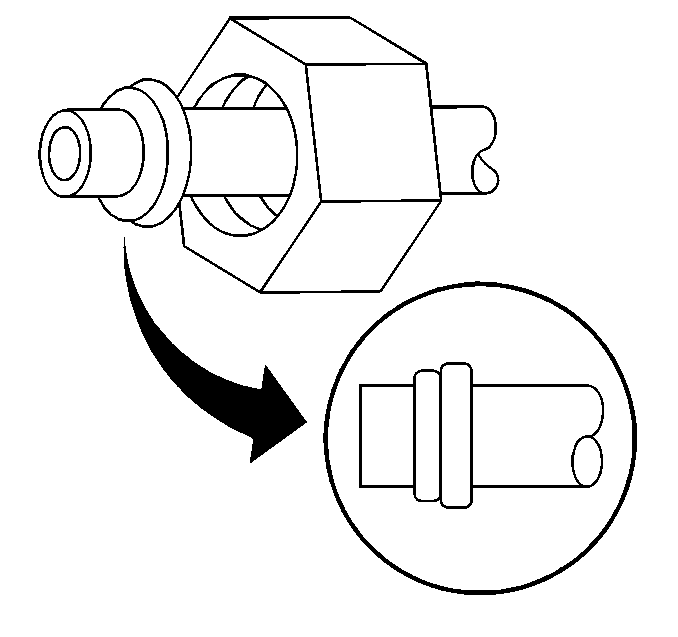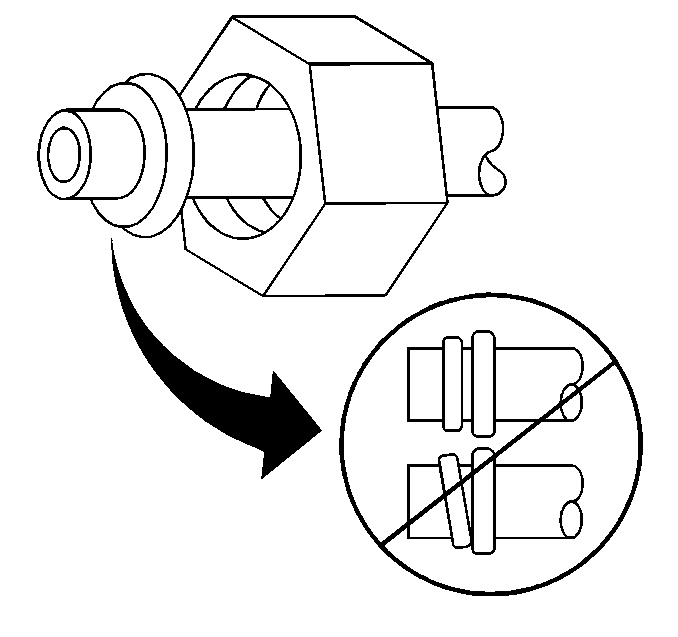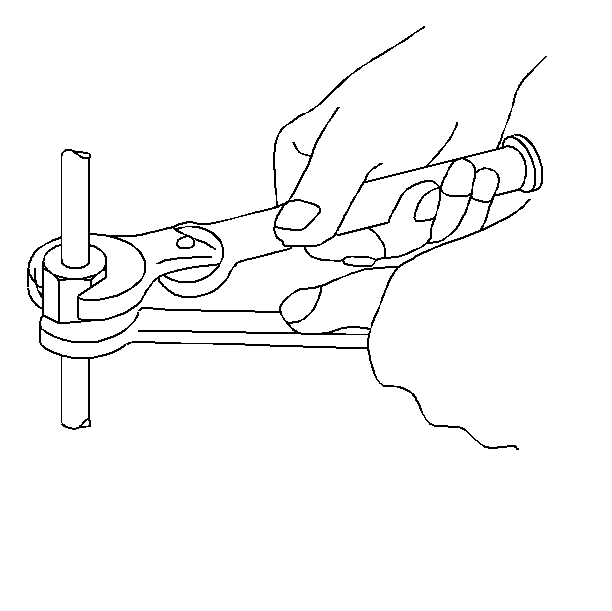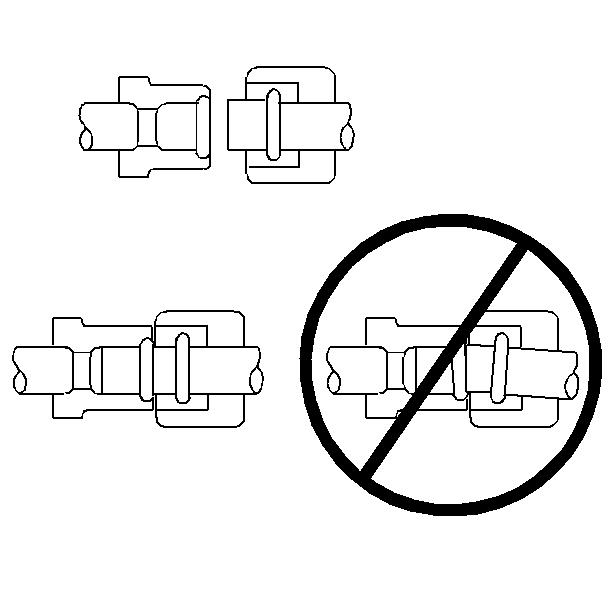| • | Ensure that the metal lines do not exhibit the following conditions. |
| | This will prevent the loss of system capacity due to line restriction: |
| • | Do not bend the flexible hose line to a radius of less that 4
times the diameter of the hose. |
| • | Do not allow the flexible hose line to come within a distance
of 63.5 mm (2 ½ in) of the exhaust manifold. |
| • | Inspect the flexible hose lines regularly. |
| | Replace the flexible hose line with new hose if one of the following
conditions exist: |

| • | Proper O-Ring Installation |

| • | Improper O-Ring Installation |
| • | Once you open a refrigerant line to the atmosphere, cap or tape
the line immediately. |
| | This will prevent any of the following items from entering the line: |

| • | Use the proper wrenches
when you make connections on the O-ring fittings. |
| | Back-up the opposing fitting with a wrench in order to prevent distortion
of the following areas: |

| • | Tighten all of the tubing connections to the specified torque. |
| | Too much or too little torque may result in the following conditions: |
| - | An inoperative A/C system |
| • | Ensure that the O-rings and the seats are in perfect condition. |
| | A burr or a piece of dirt may cause a refrigerant leak. |
| • | Install new O-rings that you have lubricated with the mineral
base 525 viscosity refrigerant oil. |
| | Do not use polyalkylene glycol (PAG) synthetic oil. |
| | Do not wipe the threads with a cloth. |
| • | Keep PAG synthetic refrigerant oil off fitting threads. Long term
contact of PAG synthetic oil on threads may cause future disassembly difficulties.
Flush threads of fitting with mineral base 525 viscosity refrigerant oil.
Do not use PAG synthetic oil. Do not wipe threads with a cloth. |




